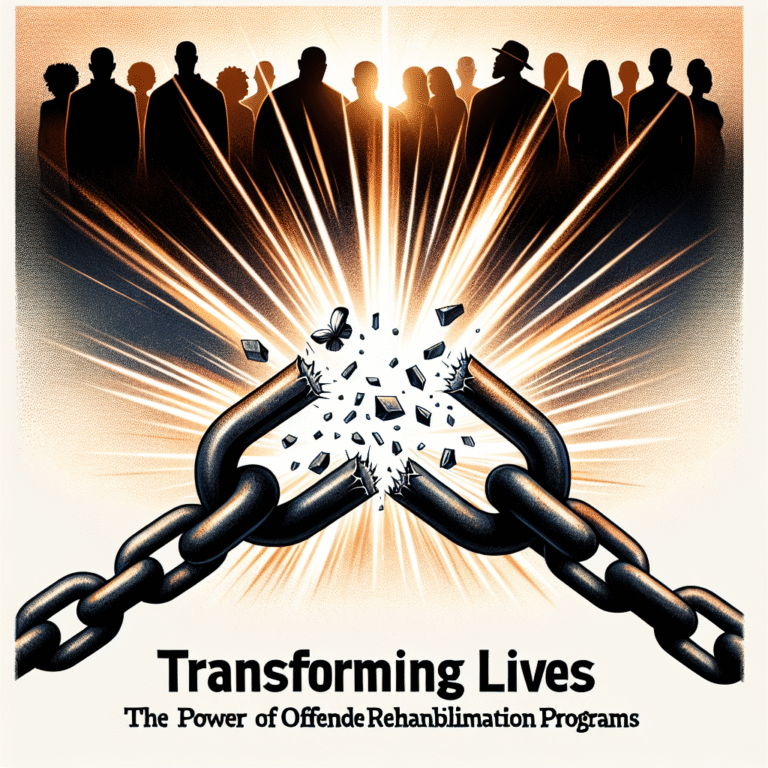
Introduction
Workplace violence is a growing concern that can have devastating effects on employees, organizations, and the broader community. As incidents continue to rise, it’s essential that businesses prioritize preventive measures. Understanding the preventive measures every organization should implement against workplace violence is not just a legal obligation, but a moral imperative that fosters a safe environment, cultivates employee morale, and protects a company’s reputation.
The Landscape of Workplace Violence
In recent years, workplace violence has manifested in various forms, ranging from verbal threats to physical assaults. According to the U.S. Occupational Safety and Health Administration (OSHA), almost 2 million American workers report having been a victim of workplace violence each year. This urgent issue demands a proactive approach that goes beyond reactive measures and instills a culture of safety and respect.
Understanding Workplace Violence
Types of Workplace Violence
Understanding the types of workplace violence is essential for implementing the right preventive measures. Not all incidents are the same, and recognizing the distinctions can help tailor efforts more effectively.
Type I: Criminal Intent
Violence committed by individuals with no legitimate relationship to the business.Type II: Customer/Client Violence
Violence directed at employees by customers or clients.Type III: Worker-on-Worker Violence
Violence between employees within an organization.- Type IV: Personal Relationship Violence
Violence that spills over into the workplace from personal relationships.
Case Study: The Impact of Understanding Types
A vital lesson can be drawn from the Bank of America incident in which an unsuspecting employee suffered from a violent attack during a robbery. They had not previously categorized their security needs effectively due to a lack of understanding of potential threats. In contrast, a similar case at a retail store demonstrated how a clear understanding and preparedness against customer-related violence led to a prompt and efficient response, minimizing harm.
The Importance of Preventive Measures
The preventive measures every organization should implement against workplace violence serve multiple purposes, including enhancing employee safety, reducing absenteeism, and fostering a culture of respect.
Developing a Comprehensive Workplace Violence Prevention Policy
Key Elements of an Effective Policy
Define Workplace Violence: Clearly outline what constitutes workplace violence in its various forms.
Establish Reporting Procedures: Create channels for employees to report potential threats or violence without fear of reprisal.
Training Programs: Mandatory training sessions on recognizing signs of potential violence and de-escalation techniques.
- Crisis Management Plan: Define steps to take during and after an incident of workplace violence.
Case Study: A Large Healthcare Organization
A regional healthcare provider developed a comprehensive workplace violence prevention policy that led to a 30% decrease in violent incidents within one year. They implemented detailed protocols that included regular training and employee surveys to ensure feedback was received, promoting a culture of safety.
Conducting Risk Assessments
The Role of Risk Assessments
Regular risk assessments allow organizations to identify and mitigate potential threats. This process involves examining physical workspaces, employee interactions, and external relationships.
How to Conduct a Risk Assessment
Identify Vulnerabilities: Look for areas where workers may be at risk, such as isolated work areas or poorly lit places.
Evaluate Work Practices: Assess employee hours, interactions, and situations that may lead to conflict.
- Plan for Mitigation: Develop strategies to address identified risks, which could include hiring additional security or modifying workspaces.
Chart: Risk Assessment Steps
| Step | Action |
|---|---|
| Identify Vulnerabilities | Conduct site visits and employee interviews |
| Evaluate Work Practices | Review schedules and workloads |
| Plan for Mitigation | Develop action plans based on assessed risks |
Case Study: A Warehouse Risk Assessment
A large warehousing company conducted a thorough risk assessment that uncovered potential hazards in their receiving area. By addressing poor lighting and implementing security measures, they reported fewer incidents of violence and improved employee morale.
Training and Awareness Programs
Importance of Training
Training is one of the most critical preventive measures every organization should implement against workplace violence. Employees must be equipped with knowledge and skills to recognize and address potential threats.
Core Components of a Training Program
Conflict Resolution Techniques: Teach employees how to de-escalate situations and manage conflict respectfully.
Recognizing Warning Signs: Employees should know what to look for, including behavioral changes in coworkers.
- Emergency Procedures: Ensure everyone understands what to do in case of an incident and the importance of rapid reporting.
Case Study: Technology Giant’s Training Initiative
A technology company revamped its existing training procedures, incorporating real-life scenarios into their programs. This led to heightened awareness and faster responses to potential threats, drastically reducing their incident rate.
Creating a Supportive Environment
Promoting a Positive Workplace Culture
Beyond policies and training, fostering a supportive environment is crucial for preventing workplace violence.
Encourage Open Communication: Create an atmosphere where employees feel comfortable sharing concerns.
Recognize Contributions: Regularly acknowledge employees’ hard work, establishing a more positive work culture.
- Wellness Programs: Implement mental health resources and counseling services to support employees facing personal challenges.
Case Study: An Educational Institute’s Culture Shift
An educational institute transformed its workplace culture by emphasizing employee well-being. They introduced employee recognition programs and counseling services, resulting in not only improved morale but also a notable decline in aggressive incidents.
Implementing Security Measures
Physical Security Measures
When considering preventive measures every organization should implement against workplace violence, physical security cannot be overlooked.
Access Control Systems: Install keycard entry systems to monitor who enters and exits the building.
Surveillance Cameras: Place cameras in strategic spots to deter violent acts and provide evidence if incidents occur.
- On-Site Security Personnel: Depending on the risks, having security personnel can make a significant difference.
Table: Security Measures Effectiveness
| Measure | Effectiveness Level |
|---|---|
| Access Control Systems | High |
| Surveillance Cameras | Medium to High |
| On-Site Security Personnel | High |
Case Study: A Financial Institution’s Security Overhaul
After a significant robbery, a financial institution revamped its security measures, establishing 24/7 on-site security and enhancing its surveillance. Post-implementation, reports of criminal activity dropped by over 50%.
Encouraging Employee Engagement
Methods for Involvement
Involve employees in the safety planning process to enhance ownership of their environment and ensure the effectiveness of the preventive measures every organization should implement against workplace violence.
Safety Committees: Form committees consisting of employees across various levels to address safety concerns and brainstorm solutions.
Feedback Mechanisms: Enable channels through which employees can voice their safety concerns.
- Engagement Events: Organize initiatives that bolster teamwork and relationships, thereby reducing tensions within the workplace.
Case Study: Manufacturing Plant Employee Involvement
A manufacturing plant saw remarkable decreases in workplace disputes after engaging employees in safety discussions. They established a safety committee that consulted with management, leading to effective interventions and increased employee satisfaction.
Regular Evaluation and Updates
The Need for Continuous Improvement
Workplace dynamics are constantly changing. Practices that were effective in the past may need revision.
Annual Reviews: Conduct regular evaluations of safety programs and policies.
Adapt to Changes: Be flexible and open to improving strategies based on new insights or incidents.
- Engage Third-Party Evaluations: Consider hiring external consultants to audit your workplace violence prevention measures for an unbiased perspective.
Case Study: An Ongoing Evaluation at an Automotive Company
An automotive manufacturer established a routine annual review process for its workplace violence prevention policies. They adapted their strategies based on employee feedback and evolving challenges, resulting in continuous improvement and employee trust.
Conclusion
Implementing effective preventive measures every organization should implement against workplace violence is not merely a response to a tragic event; it’s a systematic approach that prioritizes employee safety and well-being. Creating a culture of safety, practicing vigilance, providing training, and fostering open communication can significantly minimize risks associated with workplace violence. Businesses not only stand to protect their employees but also to enhance productivity, morale, and job satisfaction.
Take Action Today
As leaders and managers, it’s our responsibility to advocate for a safe workplace. We encourage you to start implementing these preventive measures today—your team’s safety depends on it!
FAQs
1. What constitutes workplace violence?
Workplace violence includes any anger-driven, threatening, or violent behavior that occurs during work hours or in work-related situations. This can be physical assaults, verbal threats, or harassment.
2. What are the legal requirements regarding workplace violence?
Employers are required by OSHA to provide a safe work environment, which includes taking reasonable measures to prevent workplace violence.
3. How can I encourage employees to report concerns about potential violence?
Establish anonymous reporting channels, provide assurance that employees will not face retaliation, and directly communicate the importance of reporting as a means to protect their safety.
4. How often should I conduct training on workplace violence prevention?
Regular training sessions are recommended at least once a year, with refreshers provided as needed, especially after incidents or updates to policies.
5. What should I do if a violent incident occurs?
Follow your crisis management plan, ensure all employees are safe, provide support to those affected, and evaluate the incident to adjust your preventive measures accordingly.
By following these insights and actions, organizations can create a resilient workplace that prioritizes safety and nurtures a thriving environment for all employees.

















